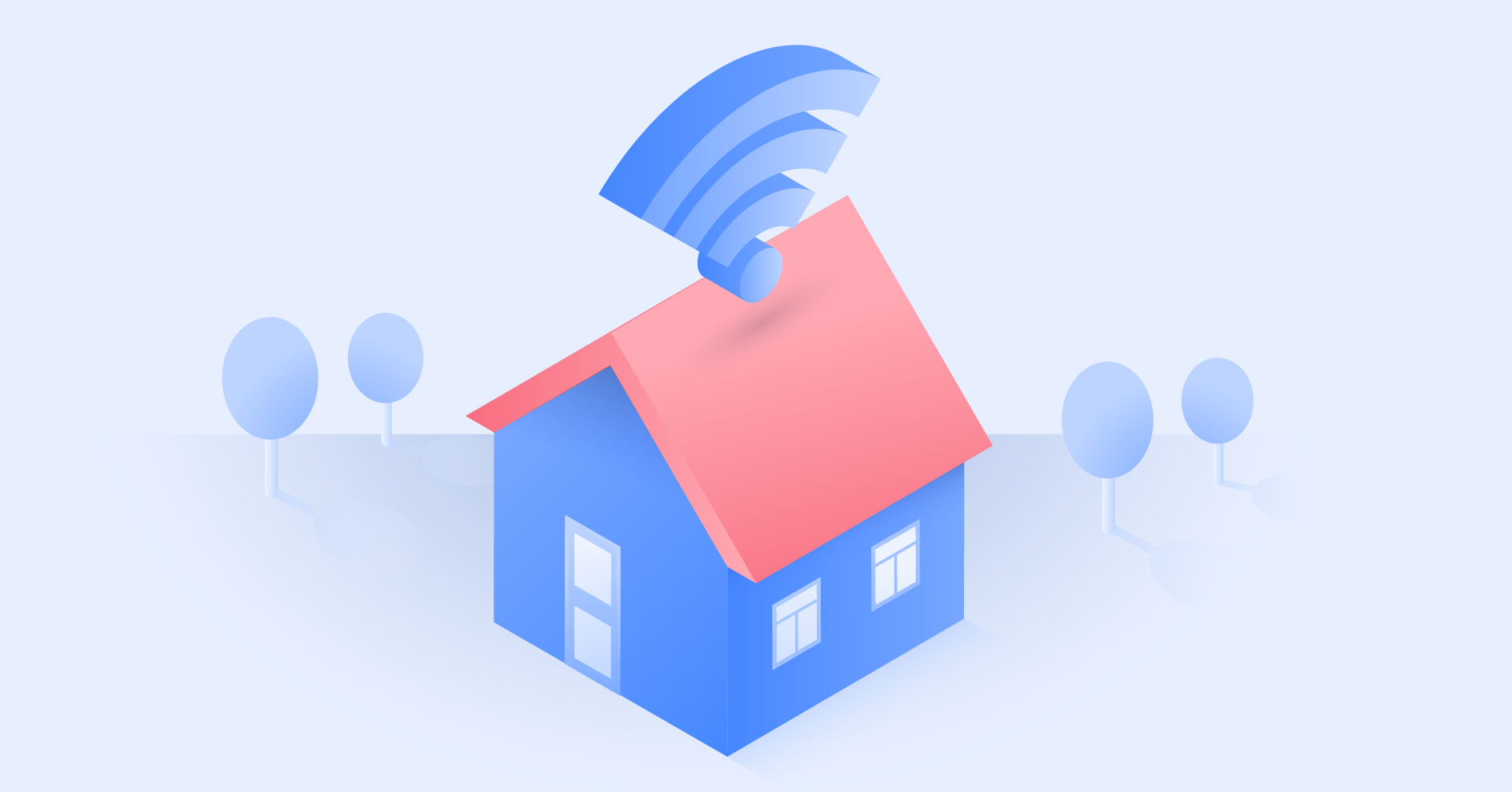SSID broadcast: How to enable and disable it
Broadcasting the SSID means displaying your network as available for nearby users trying to connect their devices to a wireless network. Enabling or disabling SSID broadcasting has its pros and cons when it comes to Wi-Fi security. You can disable your SSID broadcast if you don’t want random internet users and their devices attempting to connect to your network.
Contents
What is an SSID broadcast?
An SSID broadcast is how your router or another access point transmits your wireless network name (the service set identifier, SSID) to nearby devices by sending out signals containing the SSID information. The primary function of an SSID broadcast is to make your network visible and easily accessible to devices looking for available Wi-Fi networks.
Devices within the range of your router can detect these signals and display your network name in the list of available Wi-Fi networks, so users can select it and connect to it. SSID broadcast is helpful at your home Wi-Fi networks, where you want your Wi-Fi network visible and accessible to your and your guests’ devices.
Pros of disabling the SSID broadcast
You can disable your SSID broadcast if you don’t want anyone trying to connect to your network. Disabling the SSID broadcast will obscure your Wi-Fi network because it will no longer appear in the list of available wireless networks for nearby devices.
Here is what happens when you disable the SSID broadcast:
- Less visible to hackers. Disabling the SSID broadcast makes your Wi-Fi network name invisible to inexperienced or poorly equipped hackers.
- Invisible to casual users. Random internet users scanning for available networks can’t detect your Wi-Fi network when you no longer broadcast your SSID. You will completely eliminate casual users trying to connect to your Wi-Fi network.
Cons of disabling the SSID broadcast
Even though disabling the SSID broadcast provides obscurity, you should remember that obscurity does not mean security. Here are some drawbacks of disabling the SSID broadcast:
- Disabling the SSID broadcast will not hide your network completely. Disabling the SSID broadcast provides a false sense of security by only hiding the network name, not the fact that it exists, so skilled hackers can still discover your network and hack into it using special tools. Your router constantly transmits what are known as beacon frames to announce the presence of a wireless network. They contain essential network information and help devices to connect to it. Similarly, your devices periodically broadcast the router’s existence when you are outside of your router’s coverage area, potentially revealing to hackers who are monitoring that you are hiding your network. Because you cannot hide your router’s activity completely without turning it off, disabling the broadcast is a pretty superficial measure of security.
- You might attract unwanted attention. Disabling your SSID broadcast could also raise suspicion. Most of us assume that when somebody hides something, they have a reason to do so. A hidden network may even cause some hackers to assume you have something to hide, raising their interest in hacking your network.
- SSID Spoofing. Just like other types of spoofing, SSID spoofing is a cyberattack on wireless networks where the attacker sets up an unauthorized access point with a fake SSID resembling a legitimate network. When unsuspecting users connect to this fake network, the attacker can intercept their traffic and access sensitive information. If you stop broadcasting your SSID (for example, “MyHomeWiFi”), a cybercriminal could take advantage of the fact that the legitimate SSID is not visible and set up a rogue access point with a similar network name (“MyHome_WiFi”), making it difficult for unsuspecting Wi-Fi users to differentiate between the real and fake networks, which would increase the attacker’s chances of scamming them.
- Network Clutter. Multiple hidden networks coexisting nearby can create a cluttered wireless environment. Devices seeking to connect to a specific wireless network send out requests with particular SSIDs. When you disable the SSID broadcast, devices send out requests to each network they have connected to previously or are configured to connect, attempting to connect. These requests and responses constitute network clutter, causing device performance and connectivity issues.
- Compatibility and connection issues. Some legitimate devices might have difficulty connecting to a hidden network, causing inconvenience for users. Users will have to connect to the hidden network manually by entering the network name (SSID) and security settings (password) each time they try to connect unless they enable the auto-connect feature.
How to enable or disable the SSID broadcast
Most routers broadcast their SSIDs automatically, so to disable the SSID broadcast (or enable it after it has been disabled), you need to change your router’s settings.
Disabling the SSID broadcast
To disable the SSID broadcast, you will have to open your router’s control panel and disable it there.
- Open a web browser on a device connected to your Wi-Fi network.
- Type in your router’s IP address (here’s a tutorial on how to find it) in the address field and hit “Enter.”
- Enter your username and password.
- Find the “Wi-Fi settings” section in your router’s control panel. The exact location and wording may vary depending on each router.
- Find the SSID broadcasting option labeled “Enable SSID broadcast,” “SSID visibility,” or similar. Uncheck the checkbox or toggle switch next to the SSID broadcast option to the “Off” position to disable it.
- Save the changes by clicking the “Save” or “Apply” button. Your router might prompt you to confirm these changes before they take effect.
Enabling the SSID broadcast
If you want to enable your SSID broadcast again, follow the same steps as in the instructions above on disabling SSID broadcast but, at step 5, check the box labeled “Enable SSID broadcast,” “SSID visibility,” or similar, or toggle the switch to the “On” position. Don’f forget to save changes by clicking the “Save” or “Apply” button.
Your Wi-Fi network should now be visible to devices looking for a wireless network to connect to.
What does hiding your SSID do?
Hiding your SSID will make your Wi-Fi network name invisible to other users. However, this only hides the name, not the network itself. You cannot disguise the router’s activity, so hackers can still attack it.
Connecting becomes more complicated with your network invisible to wireless devices. Just giving a Wi-Fi password to your guests is no longer enough. They have to configure their settings manually by including the network name, security mode, and other relevant info.
How to protect your network properly
Disabling your SSID broadcast can disguise your network from inexperienced users, but it would do little against more determined and advanced cyberattackers.
Wireless security depends primarily on authentication and encryption. Disabling your SSID broadcast provides neither. Security through obscurity is a flawed solution. You can use these tips to help secure your Wi-Fi, or you can even set up a VPN on your router.
The best option is to have a proper Wi-Fi Protected Access (WPA2 and WPA3, not the old-school WEP and WPA) password. Create a strong password to make sure it stays secure.

